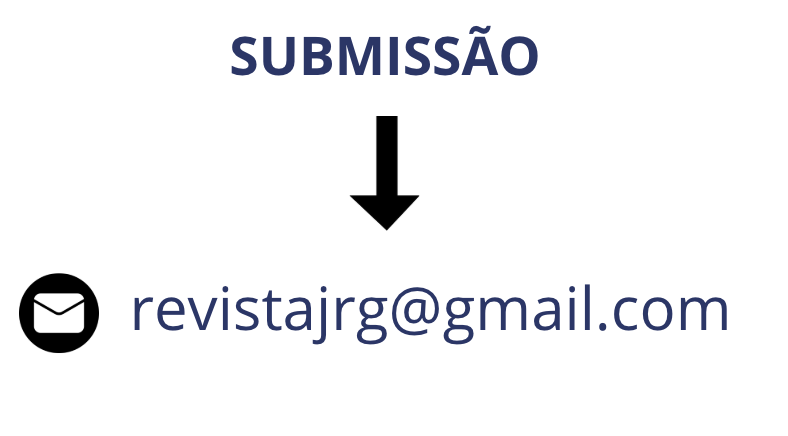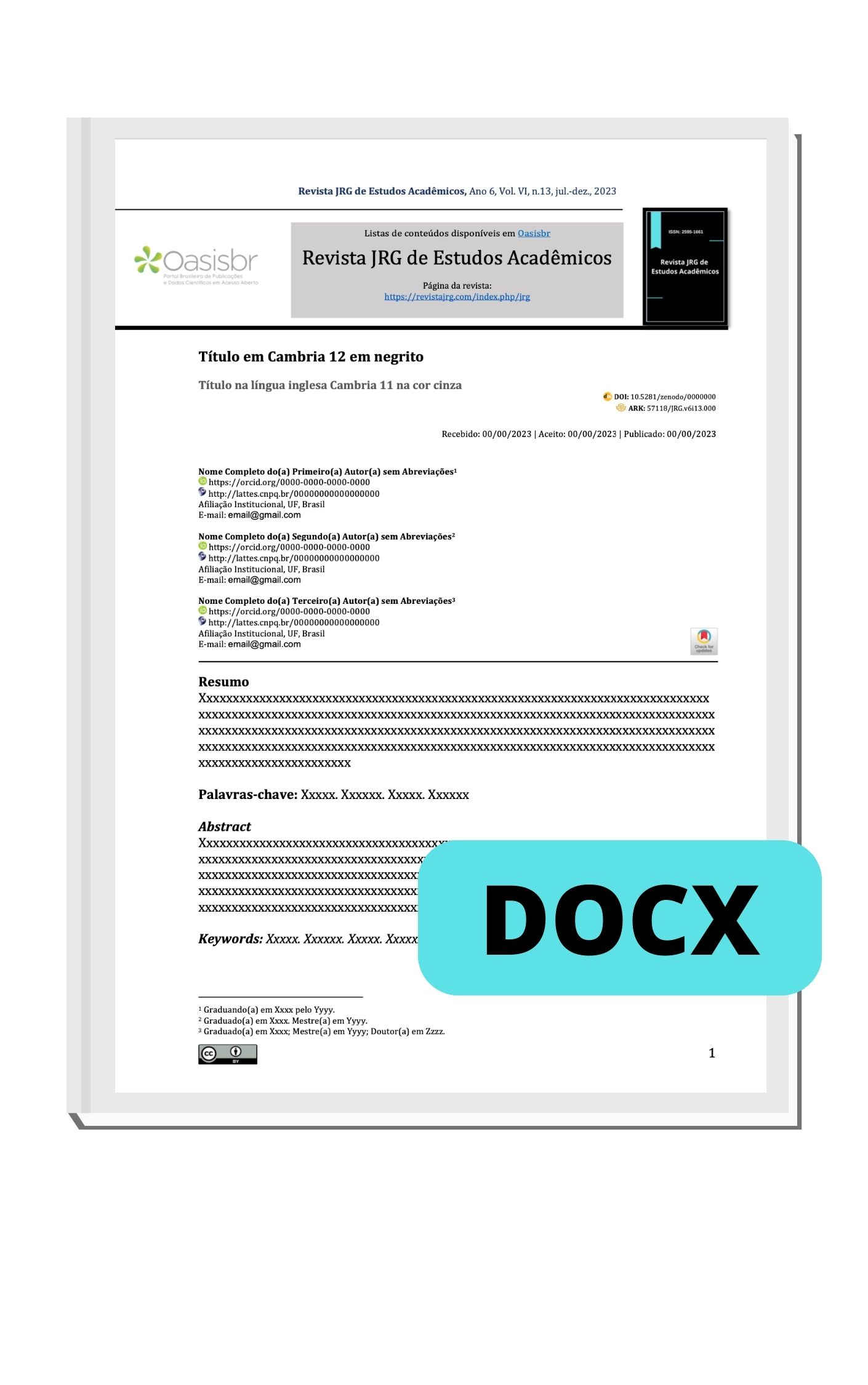Pharmacotherapeutic management of insomnia primary: a systematic review of the literature
DOI:
https://doi.org/10.55892/jrg.v7i15.1399Keywords:
Insomnia, Sleep, Hypnotics, SedativesAbstract
Introduction. Sleep is essential to maintain the individual's metabolic, neurological and cognitive balance, so when altered suddenly or prolongedly, it can trigger harmful effects on physical and/or mental health. In this context, initially identified as a symptom, insomnia has become recognized as a disorder for generating suffering or functional damage and has become frequent in clinical practice, affecting more than 30% of the elderly population, affecting not only cognition, but also attention, balance and daily tasks.Goal. To highlight the current therapies used for the management of insomnia, as a way to promote physical and mental well-being as well as greater quality of life for the insomniac population. Methodology. Articles available in the U.S. National Library of Medicine and the National Institutes Health (PubMed), Scielo and Science Direct databases were evaluated. The identification and selection of articles was carried out considering the inclusion criteria of the full text; last 5 years; English.Findings. A total of 897 articles were identified based on the descriptors used in this review. The selection based on the analysis of titles and abstracts, as well as the complete reading of the manuscripts, resulted in 22 articles eligible for analysis. Conclusion. Therapy with sedative-hypnotics, such as benzodiazepines and z-drugs, has been predominant in offices, although its side effects such as greater propensity for falls and fractures, potential for dependence, and dementia processes are known. In this sense, therapeutic alternatives such as orexin receptor antagonists are increasingly being studied, and the management of insomnia should be individualized to each patient, in order to meet the needs and reduce unwanted adverse effects.
Downloads
References
ABAD, V. C.; GUILLEMINAULT, C. Insomnia in Elderly Patients: Recommendations for Pharmacological Management. Drugs & Aging, [s.l.], v. 35, n. 9, p. 791–817, jul. 2018.
DOI: 10.1007/s40266-018-0569-8
ASAI, Y. et al. Suvorexant (Belsomra® Tablets 10, 15, and 20 mg): Japanese Drug-Use Results Survey. Drugs in R&D, [s.l.] v. 19, n. 1, p. 27–46, dez. 2018.
DOI: 10.1007/s40268-018-0256-6
ATKIN, T.; COMAI, S.; GOBBI, G. Drugs for Insomnia beyond Benzodiazepines: Pharmacology, Clinical Applications, and Discovery. Pharmacological Reviews, [s.l], v. 70, n. 2, p. 197–245, fev. 2018.DOI: 10.1124/pr.117.014381
BAH, T. M.; GOODMAN, J.; ILIFF, J. J. Sleep as a Therapeutic Target in the Aging Brain. Neurotherapeutics, [s.l.], v. 16, n. 3, p. 554–568, jul. 2019. DOI: 10.1007/s13311-019-00769-6
BAKKER, M. H. et al. Effectiveness of low-dose amitriptyline and mirtazapine for insomnia disorder: study protocol of a randomised, double-blind, placebo-controlled trial in general practice (the DREAMING study). BMJ Open, [s.l], v. 11, n. 9, p. e047142, set. 2021.
DOI: 10.1136/bmjopen-2020-047142
BEGUM, M. et al. Trends in the prescription of drugs used for insomnia: an open-cohort study in Australian general practice, 2011–2018. British Journal of General Practice, [s.l.], v. 71, n. 712, p. e877–e886, nov. 2021
DOI:https://doi.org/10.3399/BJGP.2021.0054
CASTRO, L. S. et al. Sublingual and oral zolpidem for insomnia disorder: a 3-month randomized trial. Brazilian Journal of Psychiatry, [s.l.], v. 42, n. 2, p. 175–184, abr. 2020.
DOI: https://doi.org/10.1590/1516-4446-2019-0389
CHEPKE, C. et al. Improvement in fatigue and sleep measures with the dual orexin receptor antagonist lemborexant in adults with insomnia disorder. Postgraduate Medicine, [s.l.], vol 134, n 3, p.316-325, mar. 2022.
DOI: https://doi.org/10.1080/00325481.2022.2049553
CITROME, L. et al. Lemborexant for the Treatment of Insomnia. The Journal of Clinical Psychiatry, [s.l], v. 82, n. 4, jun. 2021. DOI: 10.4088/JCP.20m13795
DAUVILLIERS, Y. et al. Daridorexant, a New Dual Orexin Receptor Antagonist to Treat Insomnia Disorder. Annals of Neurology, v. 87, n. 3, p. 347–356, mar. 2020.
DOI: 10.1002/ana.25680
DOPHEIDE, J. Insomnia Overview: Epidemiology, Pathophysiology, Diagnosis and Monitoring, and Nonpharmacologic Therapy. The American Journal of Managed Care, v. 26, n. 4, p. 76–84, mar. 2020. DOI: 10.37765/ajmc.2020.42769
EDINGER, J. D. et al. Association between insomnia patients’ pre-treatment characteristics and their responses to distinctive treatment sequences. Sleep, v. 45, n. 1, nov. 2021.
DOI: 10.1093/sleep/zsab245
EVERITT, H. et al. Antidepressants for insomnia in adults. Cochrane Database of Systematic Reviews, [s.l.], v. 5, n. 5, mai. 2018.
DOI: 10.1002/14651858.CD010753.pub2
HASSINGER, A. B. et al. Selecting a pharmacotherapy regimen for patients with chronic insomnia. Expert Opinion on Pharmacotherapy, [s.l.], v. 21, n. 9, p. 1035–1043, mar. 2020.
DOI: 10.1080/14656566.2020.1743265
HOYER, D.; ALLEN, A.; JACOBSON, L. H. Hypnotics with novel modes of action. British Journal of Clinical Pharmacology, [s.l.], v. 86, n. 2, p. 244–249, jan. 2020.
DOI: 10.1111/bcp.14180
HOYER, D.; ALLEN, A.; JACOBSON, L. H. Hypnotics with novel modes of action. British Journal of Clinical Pharmacology, [s.l.], v. 86, n. 2, p. 244–249, jan. 2020.
DOI: 10.1111/bcp.14180
INOUE, Y. et al. Efficacy and safety of lemborexant in adults with insomnia: comparing Japanese and non-Japanese subgroups from the global, phase 3, randomized, double-blind, placebo-controlled SUNRISE 2 study. Journal of Clinical Sleep Medicine, [s.l.], fev. 2021.
DOI: 10.5664/jcsm.9148
IVGY-MAY, N. et al. Efficacy and safety of esmirtazapine in adult outpatients with chronic primary insomnia: a randomized, double-blind placebo-controlled study and open-label extension. Journal of Clinical Sleep Medicine, v. 16, n. 9, p. 1455–1467, set. 2020.
DOI: 10.5664/jcsm.8526
KUNZ, D. et al. Long-Term Safety and Tolerability of Daridorexant in Patients with Insomnia Disorder. CNS Drugs, v. 37, n. 1, p. 93–106, dez. 2022.
DOI: 10.1007/s40263-022-00980-8
LÄHTEENMÄKI, R. et al. Withdrawal from long‐term use of zopiclone, zolpidem and temazepam may improve perceived sleep and quality of life in older adults with primary insomnia. Basic & Clinical Pharmacology & Toxicology, v. 124, n. 3, p. 330–340, dez. 2018. DOI: 10.1111/bcpt.13144
LIAO, H. et al. Correlation between Sleep Time, Sleep Quality, and Emotional and Cognitive Function in the Elderly. BioMed Research International, v. 2022, p. 1–7, mai 2022.
DOI: 10.1155/2022/9709536
MARKHAM, A. Correction to: Daridorexant: First Approval. Drugs, [s.l.], v. 82, p. 601-607, abr. 2022. DOI: 10.1007/s40265-022-01719-x
MODESTO-LOWE, V.; HARABASZ, A. K.; WALKER, S. A. Quetiapine for primary insomnia: Consider the risks. Cleveland Clinic Journal of Medicine, v. 88, n. 5, p. 286–294, mai. 2021. DOI: 10.3949/ccjm.88a.20031
MOLANO, J. R. V. Daridorexant: A new medication for insomnia in older adults? Neurology, v. 94, n. 21, p. 2287–2289, 25 mai. 2020. DOI: 10.1212/WNL.0000000000009489
MORIN, C. M. et al. Effectiveness of Sequential Psychological and Medication Therapies for Insomnia Disorder. JAMA Psychiatry, v. 77, n. 11, jul. 2020. DOI: 10.1001/jamapsychiatry.2020.1767
MULLINGTON, JANET M. et al. Causes and Consequences of Chronic Sleep Deficiency and the Role of Orexin. Frontiers of Neurology and Neuroscience, v. 45, p. 128–138, 2021.
DOI: 10.1159/000514956
PATEL, D.; STEINBERG, J.; PATEL, P. Insomnia in the elderly: A review. Journal of Clinical Sleep Medicine, v. 14, n. 06, p. 1017–1024, jun. 2018. DOI: 10.5664/jcsm.7172
PENTAGNA, Á.; CASTRO, L. H. M.; CONWAY, B. A. What’s new in insomnia? Diagnosis and treatment. Arquivos de Neuro-Psiquiatria, v. 80, n. 5 suppl 1, p. 307–312, mai 2022.
https://doi.org/10.1590/0004-282X-ANP-2022-S124
POP, P. et al. Management of Sleep Disorders in Community‐Dwelling Older Women and Men at the Time of Diagnosis. Journal of the American Geriatrics Society, v. 67, n. 10, p. 2094–2101, jun. 2019. DOI: 10.1111/jgs.16038
RAAD, S. et al. The Effect of Baclofen on Objective and Subjective Sleep Measures in a Model of Transient Insomnia. Sleep Medicine, v. 72, p. 130-134, abr. 2020.
DOI: 10.1016/j.sleep.2020.03.028
RASMUSSEN, M. K.; MESTRE, H.; NEDERGAARD, M. The glymphatic pathway in neurological disorders. The Lancet Neurology, v. 17, n. 11, p. 1016–1024, nov. 2018.
DOI: 10.1016/S1474-4422(18)30318-1
ROSENBERG, R. et al. Comparison of Lemborexant With Placebo and Zolpidem Tartrate Extended Release for the Treatment of Older Adults With Insomnia Disorder: A Phase 3 Randomized Clinical Trial. JAMA Network Open, v. 2, n. 12, p. e1918254, dez. 2019.
DOI: 10.1001/jamannetworkopen.2019.18254
ROTH, T. et al. Impact of lemborexant treatment on insomnia severity: analyses from a 12-month study of adults with insomnia disorder. Sleep Medicine, v. 90, p. 249–257, fev. 2022. DOI: 10.1016/j.sleep.2022.01.024
SCHONMANN, Y. et al. Chronic hypnotic use at 10 years—does the brand matter? European Journal of Clinical Pharmacology, v. 74, n. 12, p. 1623–1631, 8 ago. 2018.
SCOTT, L. J. Lemborexant: First Approval. Drugs, v. 80, n. 4, p. 425–432, fev. 2020.
DOI: 10.1007/s00228-018-2531-4
TANIELIAN, M. et al. Sleep pattern and predictors of daily versus as-needed hypnotics use in middle-aged and older adults with insomnia. BMC Primary Care, v. 23, n. 1, mai 2022.
https://doi.org/10.1186/s12875-022-01707-w
UCHIYAMA, M. et al. Effects of TS-142, a novel dual orexin receptor antagonist, on sleep in patients with insomnia: a randomized, double-blind, placebo-controlled phase 2 study. Psychopharmacology, vol. 239, n. 7, p. 2143-2154, mar. 2022.
DOI: 10.1007/s00213-022-06089-6
XU, H. et al. Efficacy of melatonin for sleep disturbance in middle-aged primary insomnia: a double-blind, randomised clinical trial. Sleep Medicine, v. 76, p. 113–119, dez. 2020
DOI: 10.1016/j.sleep.2020.10.018
YARDLEY, J. et al. Long-term effectiveness and safety of lemborexant in adults with insomnia disorder: results from a phase 3 randomized clinical trial. Sleep Medicine, v. 80, p. 333–342, abr. 2021. DOI: 10.1016/j.sleep.2021.01.048











































